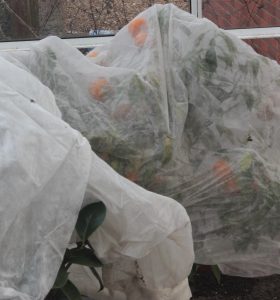If you didn’t sow your broad beans last autumn, January is the ideal time to get sow seeds in the greenhouse for an early harvest. Sow them on edge 5-8cm apart and 2.5cm deep in deep trays of peat free multipurpose compost or individually in 7.5cm small pots. Put them in a cool frost-free greenhouse or coldframe, then ‘Harden off’ by putting them outdoors in a sheltered spot in the day and bringing them back into the greenhouse at night before planting in early to mid-spring. Low growing ‘The Sutton’ and ‘Robin Hood’, are ideal for exposed sites, taller ‘Aquadulce’ and ‘Aquadulce Claudia’ are ideal for sheltered spots.
It is not always practical to grow everything from seed so make two lists: one of plants to sow and another to buy as ‘plug plant’s, then do your research to compare prices before ordering. An advantage of ‘plug plants’ is that they save greenhouse space and reduce heating costs, too.
Make early sowings of tomatoes at 18C later in the month and onions under gentle heat early in January (see December for further details). Sow Radish, Spring Onions and ‘cut and come again’ baby leaves in pots or troughs of peat free multipurpose compost for early salads.

Sweet peas can be sown now. Lay a sheet of kitchen towel on a dinner plate, moisten it with water, put the sweet pea seeds on the paper, cover with another layer of kitchen towel carefully drain away the excess water, then put them in a cool room. Leave them overnight or for a maximum of 48 hours until the ‘live’ seeds will start to swell, then transfer them into 7.5cm pots of multipurpose compost or Rootrainers so there is plenty of space for a strong root system to develop.
Strawberries that were lifted and potted up last summer, can be brought into the greenhouse. Place them near the glass for maximum light. Once they start flowering, pollinate them by hand, transferring pollen from one flower to another using a fine artists brush. Keep the compost moist and feed with dilute tomato fertiliser every two weeks to encourage flowering and fruiting. They can then be hardened off and planted outdoors later in the season.
Only water if plants show signs of stress, remove leaves showing signs of grey mould immediately, control pests like whitefly and red spider mite if they appear in warmer periods. Ventilate on warmer days but close vents before temperatures drop, usually by mid-afternoon at the latest.
Detach the main stems of greenhouse grapes from their frame and scrape off the loose bark, then use winter wash on the stems to control pests like red spider mite and mealy bug.
Protect plants in unheated greenhouses with fleece and remove the fleece during warmer days. 70g fleece, provides protection to around -5C, 30g fleece protects plants to about -3°C and standard 17g fleece provides protection to just below freezing. The added protection of the greenhouse will protect plants, too.
Happy New Year and great gardening in 2023. Matt


